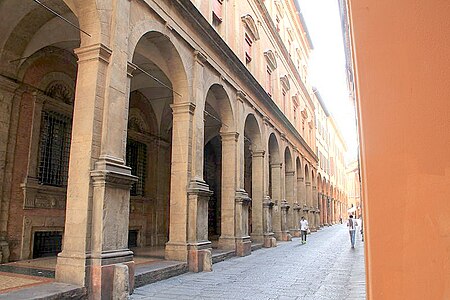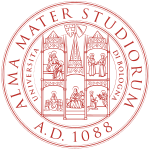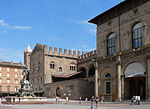Metropolitan City of Bologna
Metropolitan City of BolognaMetropolitan cities of ItalyVillanovan culture

The Metropolitan City of Bologna (Italian: Città Metropolitana di Bologna) is a metropolitan city in the Emilia-Romagna region, Italy. Its capital is de facto the city of Bologna, though the body does not explicitly outline it. It was created by the reform of local authorities (Law 142/1990) and established by the Law 56/2014, replacing the Province of Bologna. It has been operative since 1 January 2015. The Metropolitan City is headed by the Metropolitan Mayor (Sindaco metropolitano) and by the Metropolitan Council (Consiglio metropolitano).
Excerpt from the Wikipedia article Metropolitan City of Bologna (License: CC BY-SA 3.0, Authors, Images).Metropolitan City of Bologna
Piazza Maggiore, Bologna Irnerio
Geographical coordinates (GPS) Address Nearby Places Show on map
Geographical coordinates (GPS)
| Latitude | Longitude |
|---|---|
| N 44.4939 ° | E 11.3428 ° |
Address
Piazza Maggiore
Piazza Maggiore
Bologna, Irnerio
Emilia-Romagna, Italy
Open on Google Maps










